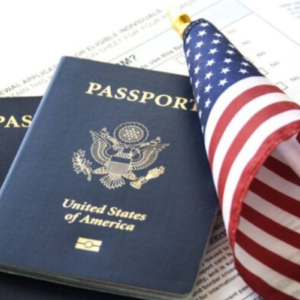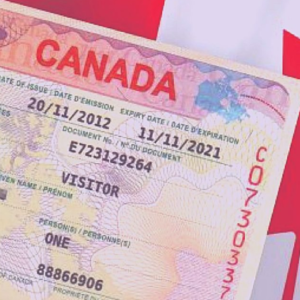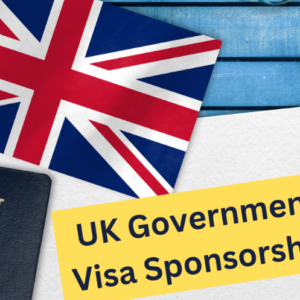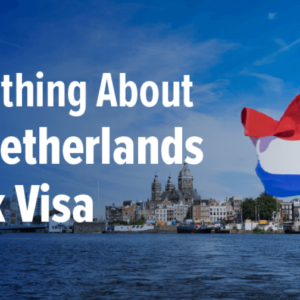Welcome to your guide to navigating the process of obtaining a work permit visa for Canada in 2024. Canada welcomes skilled workers and offers a streamlined process for those who qualify. This guide will walk you through the eligibility requirements, application process, and different streams to consider.
Canada Work Permit Visa Guide 2024
A work permit in Canada, also known as a work visa, allows foreign nationals to legally work in the country for a specific employer and position. There are various types of work permits, each with its eligibility criteria and application process. Here’s a breakdown of the key types:
- Open Work Permit: Offers the most flexibility, allowing you to work for any employer in Canada. This is typically issued for specific situations, such as accompanying a spouse with a work permit or participating in exchange programs.
- Employer-Specific Work Permit: This is the most common type, tied to a job offer from a Canadian employer. This employer will need to obtain a Labour Market Impact Assessment (LMIA) in most cases, demonstrating that hiring a foreign worker won’t negatively affect Canadian citizens or permanent residents seeking the same role.
- Innovation Stream Pilot (New for 2024!): This expedited program streamlines the application process for skilled workers in high-demand sectors facing labor shortages.
Who is Eligible for a Canada Work Permit Visa in 2024?
There isn’t a one-size-fits-all answer to eligibility for a Canada work permit visa. The good news is there are various categories, each with its own criteria. Here’s a deeper dive into who qualifies:
General Eligibility Requirements
- Age: While there’s no strict age limit, some programs may have preferences (e.g., recent graduates).
- Valid Travel Document: You’ll need a passport or travel document valid for your intended stay in Canada.
- Meet Medical Requirements: Passing a medical exam might be necessary to ensure you don’t pose a public health risk.
- Clean Criminal and Immigration History: No criminal convictions or past issues with Canadian immigration.
- Financial Means: Demonstrate sufficient funds to support yourself and any dependents during your stay.
Eligibility Based on Work Permit Type
Now let’s explore eligibility based on specific work permit categories:
1. Employer-Specific Work Permit:
- Job Offer with LMIA: This is the most common scenario. You’ll need a valid job offer from a Canadian employer supported by a positive Labour Market Impact Assessment (LMIA). The LMIA proves that hiring you won’t negatively affect Canadian citizens or permanent residents seeking the same role.
- Exempt from LMIA: There are exceptions where an LMIA isn’t required. These include intra-company transfers (working for a branch of your current employer in Canada) or specific occupations on the LMIA-exempt list ([invalid URL removed]).
2. Open Work Permit:
Open work permits offer more flexibility, allowing you to work for any employer in Canada. Eligibility hinges on your specific situation, such as:
- Spousal Open Work Permit: Issued to spouses or common-law partners of individuals with a valid work permit or permanent resident status in Canada.
- Post-Graduation Work Permit (PGWP): Available to recent graduates of approved Canadian educational institutions. Eligibility depends on the length of your study program and meeting other requirements.
- Exchange Programs: Certain international exchange programs allow for open work permits under specific agreements.
3. Innovation Stream Pilot (New for 2024)
This expedited program targets highly skilled workers in high-demand sectors facing labor shortages. Here’s what makes you eligible:
- Job Offer: A valid job offer from a pre-approved employer participating in the Innovation Stream.
- High-Skilled Occupation: Your job must fall under a high-skilled category as defined by Canada’s National Occupation Classification (NOC) system.
- Meet the NOC Requirements: Your education, skills, and experience must align with the specific requirements of your offered position.
Remember, these are general guidelines. For the most up-to-date information and specific requirements, always refer to the official IRCC website.
Other Additional Considerations
- Provincial Programs: Some Canadian provinces offer specific work permit streams with unique eligibility criteria. Research the provincial immigration office for details in your desired location.
- Work Experience: While not a universal requirement, some work permits may look for a minimum amount of skilled work experience in your field.
By understanding these eligibility points and exploring the different work permit categories, you can increase your chances of obtaining a Canadian work permit visa and embarking on your exciting Canadian work adventure
The Application Process for Canada Work Permit Visa
Obtaining a Canadian work permit visa involves a series of steps. While the specifics might differ slightly depending on your chosen work permit category, here’s a comprehensive breakdown of the application process:
1. Determine Your Eligibility:
This is the crucial first step. Carefully research the different work permit categories (discussed previously) and assess which best aligns with your situation and qualifications. Refer to the IRCC website for the latest eligibility requirements.
2. Gather Required Documents:
Once you’ve identified the relevant work permit category, compile the necessary documents. This typically includes:
- Completed Application Form: Download the appropriate form from the IRCC website and fill it out accurately and completely.
- Proof of Identity: Your valid passport or travel document is essential.
- Job Offer and LMIA (if applicable): An official job offer letter from your Canadian employer is crucial. If the position requires an LMIA, ensure your employer has obtained one.
- Proof of Qualifications: Documents like educational certificates, diplomas, or work experience letters demonstrating you meet the job requirements.
- Medical Exam Results (if required): IRCC may request a medical exam to confirm you pose no public health risk.
- Proof of Funds: Documentation showcasing sufficient financial resources to support yourself and any dependents during your stay in Canada.
- Additional Documents (program-specific): Some work permit categories may require additional documents specific to the program, such as proof of your relationship for a spousal open work permit.
3. Apply Online:
The IRCC offers an online application system for most work permits. This streamlines the process and allows you to upload your documents electronically.
Here’s a general walkthrough of the online application process:
- Create an online account with IRCC.
- Select the appropriate work permit application form.
- Fill out the online form with accurate information.
- Upload all the required documents in the specified format.
- Pay the processing fees for yourself and any accompanying dependents.
- Submit your application electronically.
4. Processing Times and Communication:
Processing times for work permit applications can vary depending on the category, workload at IRCC, and your individual circumstances. The new Innovation Stream promises faster processing within weeks.
Once submitted, IRCC will communicate with you through your online account regarding the status of your application. They may request additional information or documents if necessary.
5. Biometrics (Optional):
In some cases, you may be required to provide biometric information (fingerprints and photograph) at a designated service center.
6. The Decision:
Once IRCC has processed your application, they will notify you of the decision through your online account. This could be an approval, a request for further information, or a refusal.
By following these steps and staying organized, you can significantly increase your chances of a successful work permit visa application for Canada. Remember, the IRCC website remains your primary source for the latest information and official procedures.
Canada’s New Innovation Stream Pilot (2024)
Canada’s job market is hungry for innovation, and the brand-new Innovation Stream Pilot, launched in April 2024, aims to address this by attracting highly skilled foreign workers in critical sectors. This expedited program streamlines the work permit process for both employers and skilled individuals.
It is a two-year pilot program designed to attract and retain global talent in high-growth sectors experiencing labor shortages. It streamlines the work permit application process for qualified foreign workers by eliminating the need for a Labour Market Impact Assessment (LMIA) in most cases.
Who is Eligible?
- Skilled Workers: You’ll need to possess the education, skills, and experience necessary for a high-skilled occupation in Canada (refer to the National Occupation Classification – NOC system for more details).
- Job Offer: A valid job offer from a pre-approved employer participating in the Innovation Stream Pilot is essential.
- Employer Eligibility: Companies must demonstrate a focus on innovation and high-growth potential to qualify for the program. IRCC has a specific selection process for employers, so not all Canadian businesses will be automatically eligible.
Benefits of the Innovation Stream
- Faster Processing: The streamlined process aims to deliver work permit approvals within weeks, significantly faster than traditional LMIA-based applications.
- No LMIA Required: This eliminates a step that can be time-consuming and complex for employers.
- Employer Flexibility: Companies can hire skilled talent from the global pool without lengthy LMIA procedures.
- Open Work Permit for Dependents: Spouses or common-law partners of approved Innovation Stream workers can receive an open work permit, allowing them to work for any employer in Canada.
Things to Consider
- Pilot Program: The Innovation Stream is currently a two-year pilot, so its future beyond March 2026 is uncertain.
- Employer Selection: Not all Canadian employers will be eligible to participate. You’ll need to confirm if your potential employer is part of the program.
- Job Offer Specificity: The job offer must be specific and directly related to your skills and experience.
Overall, the Innovation Stream Pilot presents a fantastic opportunity for skilled workers in high-demand fields to secure work permits in Canada swiftly. If you possess the qualifications and a job offer from a participating employer, this program is definitely worth exploring.
Frequently Asked Questions about Canada Work Permit Visa
Let us now take a look at some common questions people ask about the Canada work permit:
Q: I have a criminal record. Can I still get a work permit visa?
A: Not necessarily. Serious criminal convictions or past issues with Canadian immigration can hinder your eligibility. Consult with an immigration lawyer for a more specific assessment.
Q: How long does it take to get a work permit visa?
A: Processing times vary depending on the category and workload at IRCC. The new Innovation Stream promises faster approvals within weeks, while standard processing times can take longer.
Q: What if my job offer doesn’t require an LMIA?
A: There are specific professions exempt from the LMIA requirement. You can find a list on the IRCC website ([invalid URL removed]).
Q: What happens if my work permit application gets denied?
A: You have the right to appeal the decision within a specific timeframe. Consulting with a licensed immigration lawyer can be helpful during this process.
Q: Can I extend my work permit visa?
A: Yes, under certain circumstances, you can apply to extend your work permit visa from within Canada.
Q: Can a work permit visa lead to permanent residency in Canada?
A: While not a guaranteed pathway, a work permit can be a stepping stone towards permanent residency. Canada offers various immigration programs that may give points for Canadian work experience.
Q: What are the financial requirements for a work permit visa?
A: You’ll need to demonstrate sufficient funds to support yourself and any dependents during your stay in Canada. The specific amount may vary depending on your situation and the province you’ll be working in.
Q: What are some additional costs to consider besides the processing fees?
A: There might be additional costs associated with medical exams, police certificates, and biometrics (fingerprints and photographs).
Q: What if I don’t speak English or French fluently?
A: While language proficiency isn’t a universal requirement, some employers may prefer candidates with strong English or French skills. Furthermore, language testing might be required for certain professions or immigration programs.
Q: Can I bring my family with me?
A: This depends on the work permit category. Spouses or common-law partners of some work permit holders may be eligible for an open work permit allowing them to work anywhere in Canada. Dependents may also be subject to medical examinations.
Q: What happens after my work permit expires?
A: You’ll need to explore options like:
- Applying for an extension of your work permit (if eligible).
- Transitioning to permanent residency status in Canada.
- Returning to your home country.
Q: Should I consider using a consultant to help with my application?
A: While not mandatory, a licensed immigration consultant can offer valuable guidance throughout the process. They can assess your eligibility, help gather documents, and ensure your application is complete and compliant.
By understanding these nuances and exploring your options, you can embark on your exciting Canadian work adventure with greater confidence.
See More and Apply Now
Conclusion
Obtaining a work permit Visa in Canada opens doors to a rewarding professional experience. With careful planning and this guide as a resource, you can navigate the process and embark on your Canadian adventure. Remember, this guide provides a general overview. Always refer to official IRCC resources for the most up-to-date and comprehensive information.





